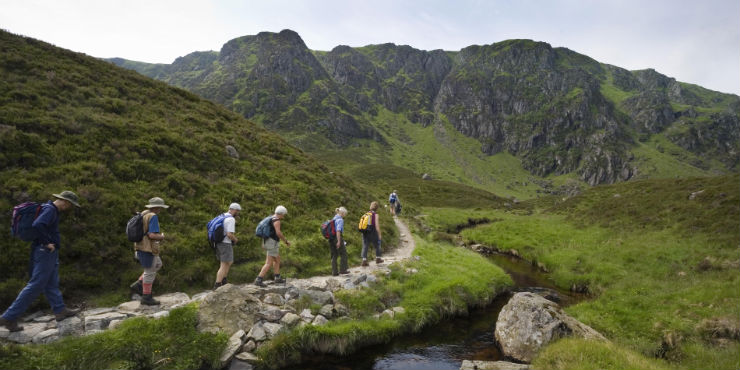Before starting any hike you have to get to the trailhead – the point at which the hike begins. There are several ways to get to the there, some better than others depending on the type of trail you’re doing. Firstly, lets look at the two different types of trail.

The Types of Trail
There are only two different types of trails, the Linear – those beginning at the trailhead and ending at some other point, and the Circular – those that both start and finish at the trailhead, whether in a grand circle or by returning along the same trail once a certain point is reached. Both can pose differing challenges for transport, so let’s have a look at both kinds.
Circular Trails

Own Vehicle – Having your own vehicle is the easiest option for a circular hike as you drive to the trailhead and park it there, returning to it at the end. Be aware that some National Parks require a parking permit. Lone vehicles in a deserted National Park car park can be a target for thieves, so make sure valuable items aren’t left inside the vehicle while you’re walking. Also pay attention to the route to get to the trailhead, if you don’t have a four-wheel drive vehicle and there are fords on the way, more walking may be required before you even start the trail.
Being Dropped Off – While this method saves having to worry about parking permits and theft, coordinating the pick up may be troublesome. Your ride might end up waiting hours if there’s some delay on the hike and with little mobile phone reception in National Parks, there’s no way of letting them know.
Taxi – This may be the only option if there’s no-one you know near the National Park or if you’re in a foreign country. While it’s cheaper with more than one person, it suffers from the same issues as Being Dropped Off in that communicating with the driver in areas with no mobile phone reception is troublesome.
Buses – While this could be a valid option, if they’re available it would mean planning around getting to a certain point at a certain time, or knowing the timetable if there are delays. This only works if the National Park is near a major road, the more remote the hike the less likely there will be a bus service.
Linear Trails

Dropping Your Car At The End – Perhaps the easiest means of transport on a Linear hike is to get someone to follow you to the end of the trail, drop your car off and then have them taxi you to the beginning. This takes less organisation, and you’re not committed to finishing the trail at a certain time to be picked up. Don’t leave valuables in your vehicle, as thieves can target lone cars in National Parks.
Two Vehicle Drop Off – If hiking as a group and there are two or more cars between you, simply drop one or more cars at the end of the trail and transport everyone to the trailhead in the other. This is the easiest method for groups of walkers, but more opportunities for thieves.
Being Dropped Off – Having someone drop you off at the start and collect you from the end is the next easiest transportation means that only suffers from the issue of communication with the person picking you up, similar to that of Circular hikes.
Taxi – Similar to Being Dropped Off, but with a tariff. It also has some issue with describing the end of the trail if you’ve not been there before. Communication is still an issue.
Buses – The next easiest method as long as there’s a bus stop near both start and end of the trail. Ensure you have an up-to-date timetable and you plan around the times.
One Vehicle – A solo hiker with a vehicle can be the most difficult transport means for a linear hike. If you park at the trailhead you need to plan a means to get back to it once you’ve completed the hike. This could mean catching a bus to the other end or arranging someone to collect you and delivery you there. As an alternative, hitch-hiking back to your vehicle might be a way to go if both start and end are on or near major roads. Most hikers will pick up another hiker they see on the side of the road, your pack being the dead give-away.

Then, once you’re at the Trailhead the only thing left to do is begin walking…
The Lone Trail Wanderer

















 If you are travelling in a foreign country you can find information here:
If you are travelling in a foreign country you can find information here: Information is the tool of the wise,
Information is the tool of the wise,
